Ahead of the eighth edition of Latin America’s 50 Best Restaurants, we celebrate El Espíritu de América Latina, a collection of restaurants that embody the spirit of the region, presented in association with S.Pellegrino & Acqua Panna
In a year that has been devastating for restaurants everywhere, those very restaurants have often been the ones to lift up their communities, whether by feeding the vulnerable or simply providing the comfort and warmth of a familiar meal. To recognise and give thanks for their role in the region’s recovery, 50 Best has identified establishments that sit at the heart of – and represent – their communities.
Neither a list nor a ranking, El Espíritu de América Latina is a selection of restaurants across the length and breadth of the region, put together with the help of the chefs and friends of Latin America’s 50 Best Restaurants. Covering more than 9,000km from Monterrey in northern Mexico to Puerto Natales in southern Chile, the collection sits in parallel to the annual list of Latin America’s 50 Best Restaurants, sponsored by S.Pellegrino & Acqua Panna, which will be unveiled on 3rd December.
El Espíritu features restaurants that have stepped up to feed the hungry during the Covid-19 pandemic, as well as those that have always supported their communities, and traditional local spots without which their neighbourhoods would not feel the same. Discover the spirit of Latin America and join us in giving these restaurants the acclaim they deserve.
ARGENTINA
Café San Juan, Buenos Aires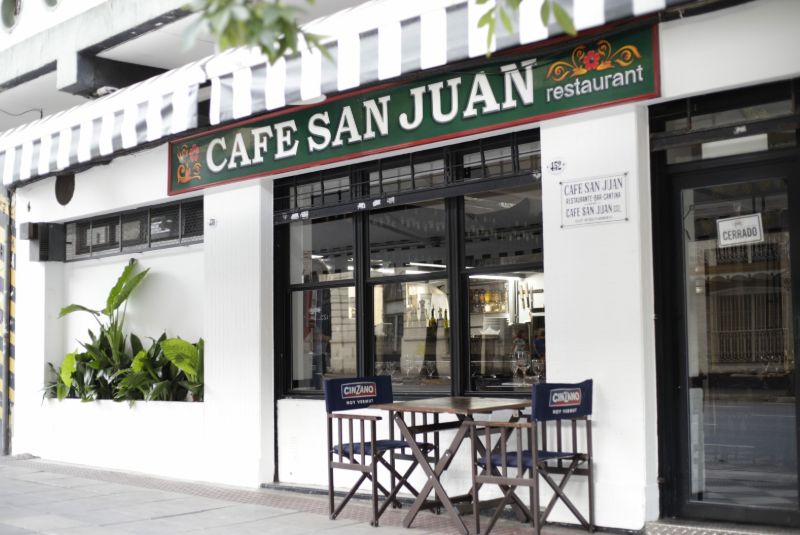
A favourite of Buenos Aires residents for almost 20 years, Café San Juan has transformed into a pillar of the local community during the pandemic. When restaurants were forced to close in March, the Italian restaurant in bohemian San Telmo developed a ‘neighbourhood menu’ delivering comfort foods like lasagne or meatballs to customers for just 250 pesos ($3) each. In April, chef Leandro ‘Lele’ Cristóbal went a step further, delivering delicious hot meals to frontline medical staff every Friday throughout the lockdown.
cafesanjuan.com.ar
Catalino, Buenos Aires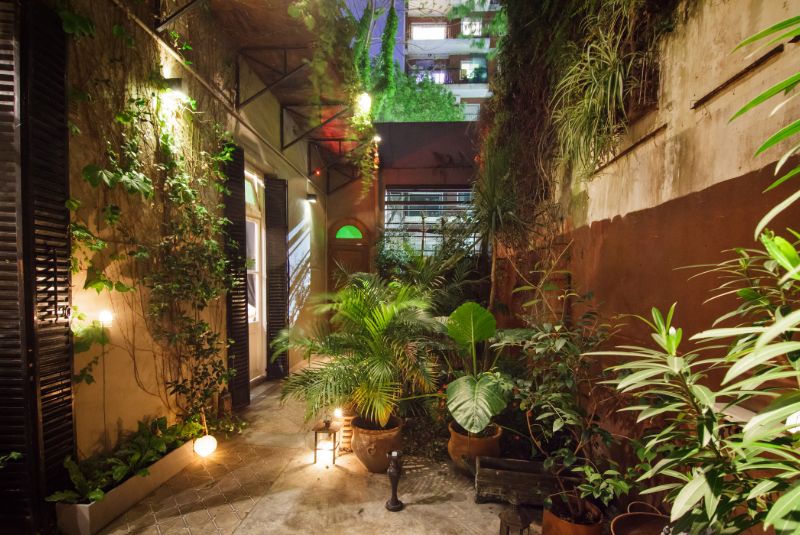
Created by sisters Raquel and Mariana Tejerina in 2017, Catalino is based around food sovereignty: the idea that those who produce, distribute and consume food should also control its policies and mechanisms. With a network of more than 180 producers around the country, the restaurant in Colegiales, Buenos Aires, serves only organic or agro-ecological ingredients and ensures all protein is sustainable, fully traceable and that the whole animal is used. Seasonal dishes include wild boar ribs with fries or asparagus with romesco sauce.
facebook.com/catalinorestaurant
Corte Comedor, Buenos Aires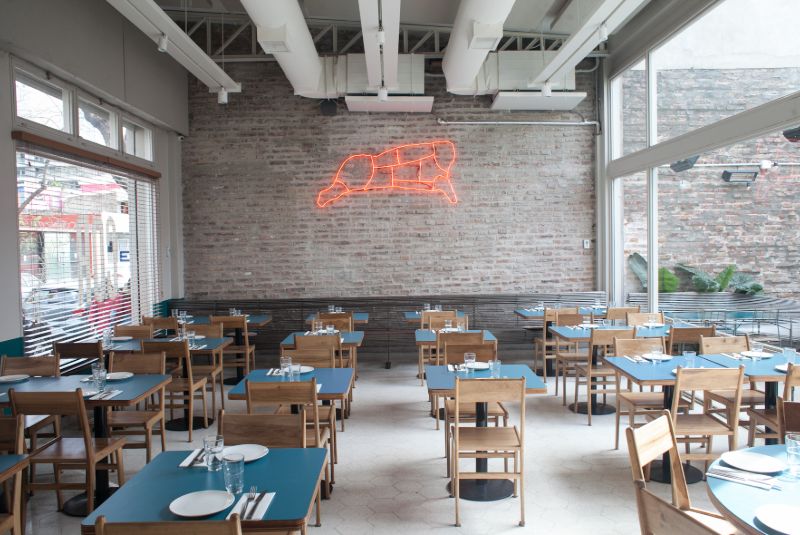
Credited as one of the restaurants transforming Argentina’s steakhouse scene, Corte Comedor sprung from a butcher’s shop in 2018 with the aim of promoting and recovering undervalued and underused types and cuts of the cow. Using larger cattle than those typically consumed, a different fattening system and a grass-fed British breed, Corte Comedor serves every cut of beef alongside Argentine classics like grilled provoleta cheese and chorizo from its own delicatessen.
instagram.com/cortecomedor
Pulpería Quilapán, Buenos Aires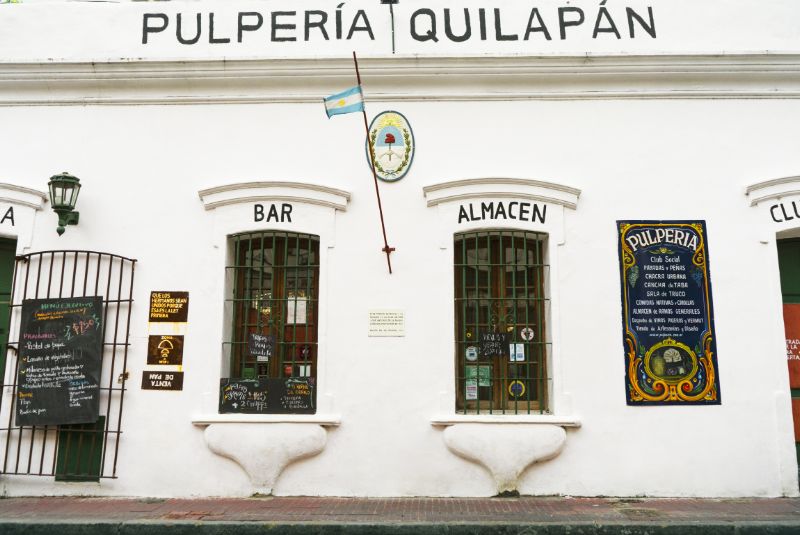
Located in the oldest house in San Telmo neighbourhood, Pulpería Quilapán is a historic neighbourhood bar-restaurant serving the sort of simple, home-cooked food a grandmother might make, alongside organic wine, craft beer and vermouth. Community-focused since its opening in 2012, Pulpería Quilapán was quick to help the needy and has been serving 100 free meals per week to the vulnerable since the beginning of the lockdown, as well as providing 5,000 meals to frontline doctors and nurses.
pulperiaquilapan.com
Glotón Bar de Carnes, Córdoba
A restaurant and bar in the city of Córdoba serving burgers, meaty sandwiches, pizza and ribs, Glotón is a place to feel proud to be gluttonous. It employs a ‘triple-R’ approach of reducing waste, reutilising and recycling, with a commitment to the local environment and community. Glotón is also proactively LGBTQ-friendly and inclusive. On the coldest winter days of the lockdown, from May to July, Glotón’s team gave away 500 meals to overwhelmed shelters to help people living on the streets.
facebook.com/GLOTONbar
El Botellón, Mendoza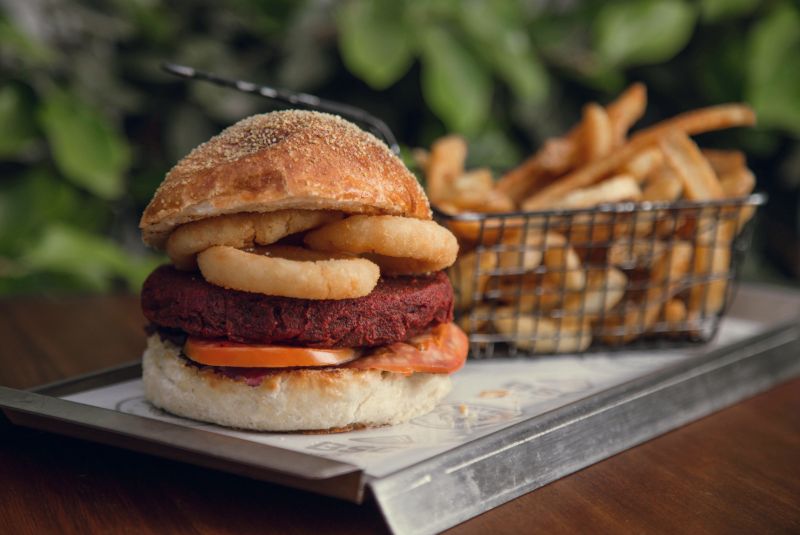
A bar-restaurant, art gallery, radio station and cultural space in Argentina’s wine country, El Botellón has long hosted workshops and fairs as part of its commitment to the local community. As a ‘B-certified’ enterprise, it also employs people with disabilities and has created a handbook on good environmental practices for Mendoza’s hotels and restaurants.
facebook.com/ELBOTELLONMZA
BOLIVIA
Ali Pacha, La Paz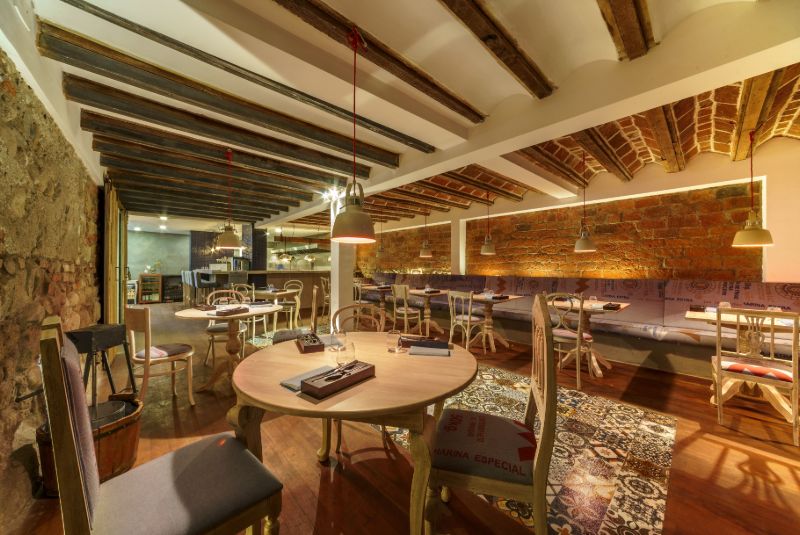
Ali Pacha, which refers to the plant kingdom in the Aymara language, is an exploration of all things vegetarian and vegan, with dishes including cured watermelon with capers or marinated seitan, a vegan meat alternative. All ingredients are 100% Bolivian and sourced from small independent producers. Gustu-trained executive chef Sebastian Quiroga works with a team of young Bolivians, including head chef Paola González and restaurant manager Pablo Antelo.
alipacha.com
Manq’a, La Paz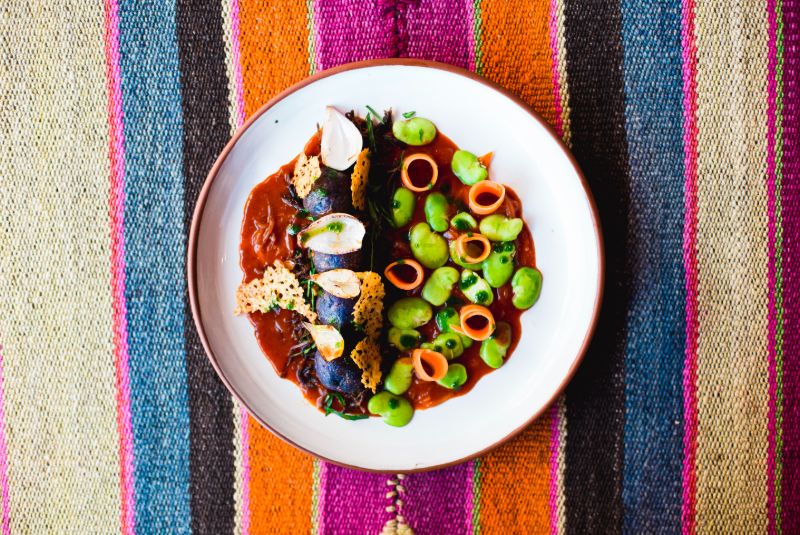
A project that began in 2014 to give opportunities to underprivileged young Bolivians has now trained more than 4,000 cooks. Meaning ‘food’ in the Aymara language, Manq’a uses Bolivian produce and techniques in dishes like confit Andean lamb or Amazonian river fish. The restaurant is about to move to a new location in Plaza Avaroa, one of the most symbolic squares of La Paz, where it will also have a café selling Manq’a bakery produce. There is no head chef or sous chef – at Manq’a, all staff are treated equally.
manqa.org
Popular Cocina Boliviana, La Paz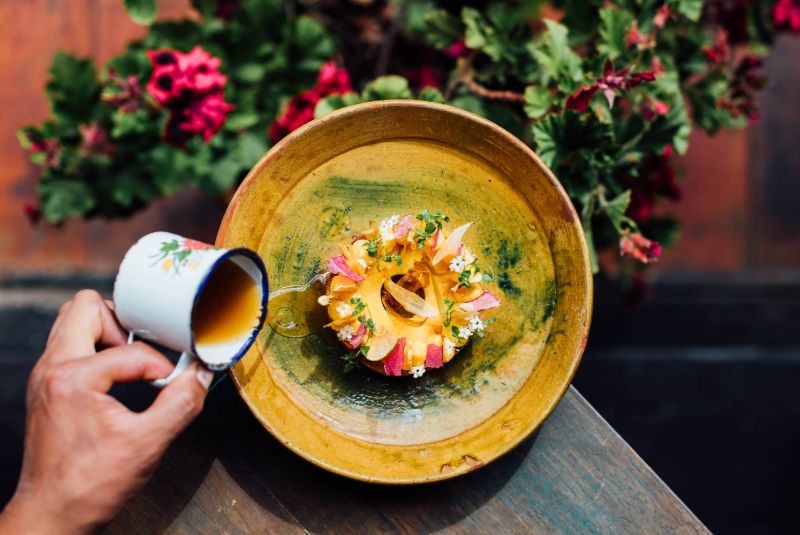
Set up by Juan Pablo Reyes, Diego Rodas Zurita and Alexandra Meleán, three friends with a passion for great Bolivian food, Popular Cocina Boliviana celebrates popular cuisine using traditional flavours and local produce. With a menu set at 70 bolivianos ($10) for a starter, main, dessert, drink and house-made bread, the restaurant aim to promote local cuisine and make it accessible to all. Each dish is a rainbow of colour, from quinoa soup to ají de lentejas, a delicious spicy stew.
facebook.com/popularlapazbolivia
BRAZIL
Banzeiro, Manaus
Felipe Schaedler’s flagship restaurant in the capital of Amazonas state is a showcase for the extraordinary ingredients of the rainforest – think lemongrass-tasting saúva ants in yellow manioc foam or giant grilled river fish stuffed with fluffy farofa flour and tangy salsa. An important figure in Brazilian gastronomy, Schaedler works with local producers to research indigenous Amazonian ingredients like edible flowers and mushrooms cultivated by the Yanomami tribes. In 2019, he opened a branch of Banzeiro in São Paulo, seeking to educate southern Brazilians about the fruits of the jungle.
facebook.com/Banzeiro
Altar, Cozinha Ancestral, Recife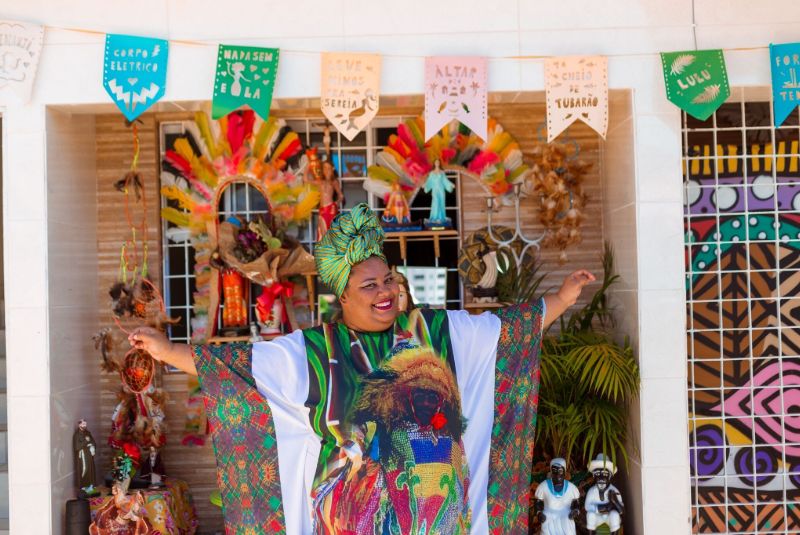
Set in a brightly coloured house in the northeastern coastal city of Recife, chef Carmem Virginia Barbosa dos Santos ’s restaurant is an homage to all things orixá – the native religion of the Yoruba people that originates in western Africa. While sharing her knowledge and passion for spirits and the rituals of Candomblé, Barbosa cooks afro-Brazilian comfort foods like moqueca, a creamy fish stew. Having been subjected to bullying, racism, religious intolerance and fat-shaming over her lifetime, TV chef Barbosa now speaks out against prejudice and gives opportunities to Black chefs.
facebook.com/restaurantealtar
Aconchego Carioca, Rio de Janeiro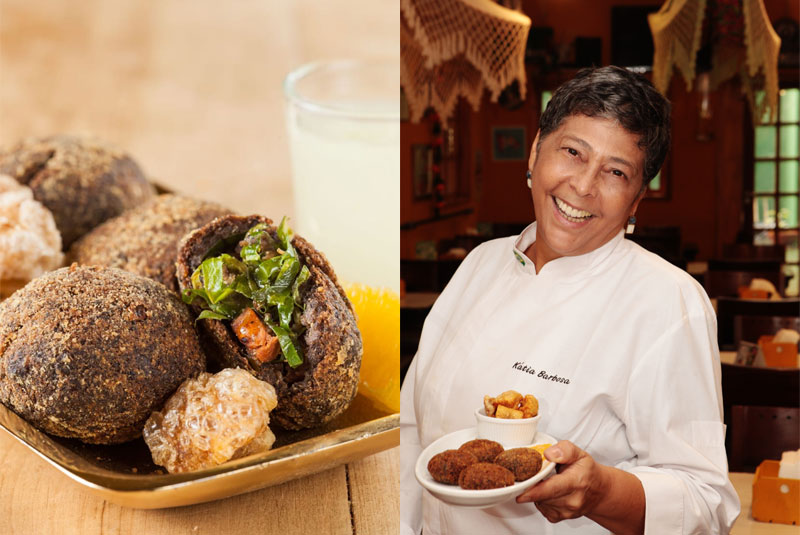
Translating from Portuguese as ‘carioca cosiness’ – carioca being the term for the residents of Rio de Janeiro – Aconchego Carioca is one of the Brazilian city’s warmest, most welcoming spots. Under the command of charismatic chef Kátia Barbosa and her daughter Bianca, this restaurant in the north of the city has been serving deep-fried feijoada balls and classic comfort food dishes for almost 20 years. When not cooking with her mother, Bianca Barbosa also lectures at Augusto Motta University and helps organise not-for-profit soup kitchen, Gastromotiva.
facebook.com/aconchego.carioca
Ori, Salvador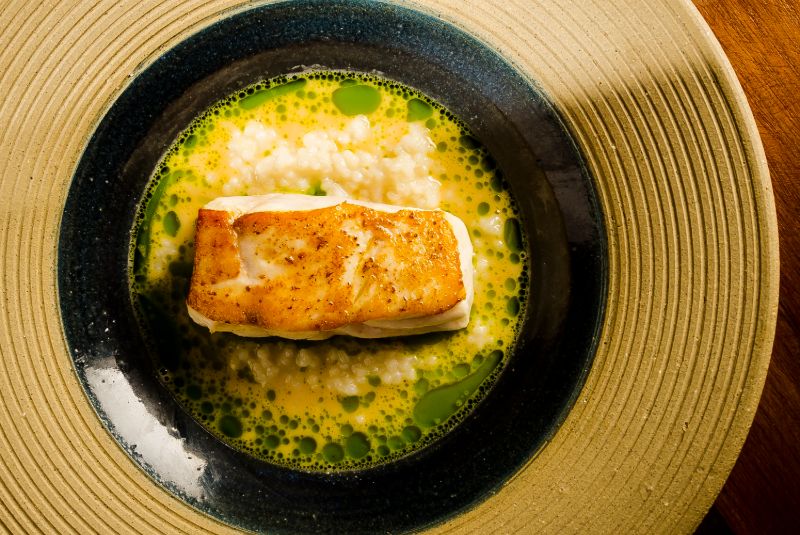
In the capital of Brazil’s northeastern state of Bahia, husband and wife team Fabrício Lemos and Lisiane Arouca use local ingredients such as lobster to create simple, memory-provoking dishes like seafood rice. Behind Ori and their two more upmarket restaurants, Origem and Minibar Gem, is the Instituto Ori, an organisation set up to research and investigate Bahia’s five biomes through regular exploratory expeditions. Recent trips took in the cultivation of mangrove oysters and the cassava ‘flour houses’ of Copioba Valley.
orirestaurante.com.br
Mãos de Maria, São Paulo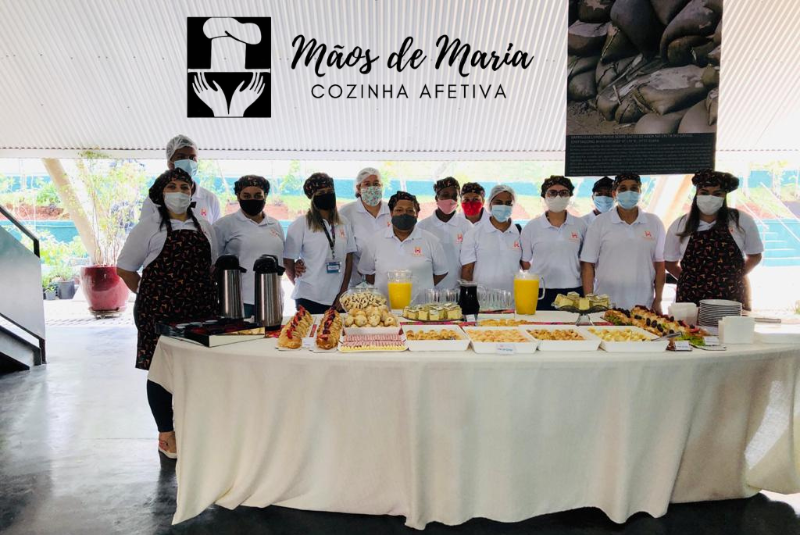
Located on a rooftop in one of São Paulo’s poorest communities, Paraisópolis, Mãos de Maria is a social enterprise run by Elizandra Cerqueira and Juliana da Costa Gomes that gives financial autonomy to vulnerable women and those affected by domestic violence. Since 2007, the project has trained almost 4,000 women, helping them to enter the job market. The colourful restaurant is open to the public and serves hearty stews like feijoada and moqueca to the sound of samba. During the pandemic, Mãos de Maria helped create 200 jobs while distributing 1 million meals to the hungry.
facebook.com/Bistroecafemaosdemaria
Capim Santo, Trancoso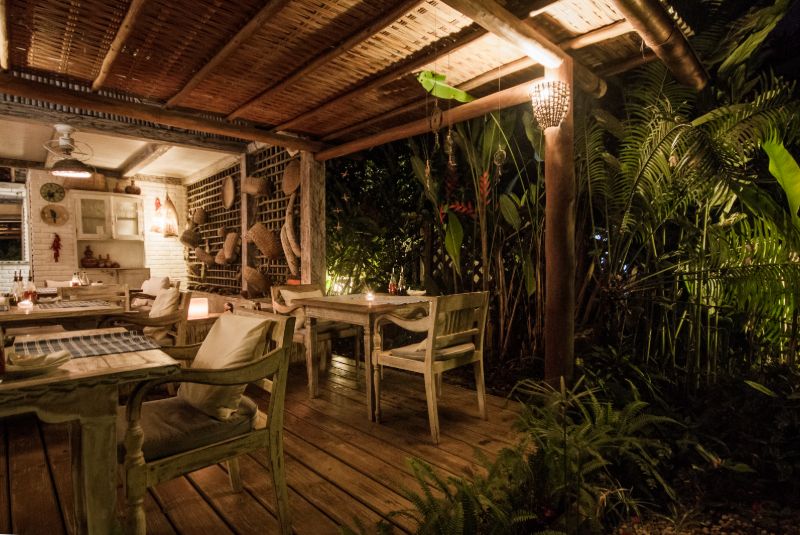
In 1985, long before the tiny northeastern beach resort of Trancoso became a hit with supermodels and Hollywood celebrities, Capim Santo opened with sustainability at the heart of its seafood-focused menu. Almost four decades later, with restaurants in São Paulo and Rio and a cookery school for young people from low-income backgrounds, chef Morena Leite turned to the community, creating Capim Solidário to feed the hungry during the pandemic. In São Paulo, Leite and team donated 1,000 hot meals per week to hospitals and communities, while in Trancoso they distributed food to local neighbourhoods.
restaurantecapimsanto.com.br
CHILE
Aurora, Antofagasta
In the northern port city of Antofagasta in the Atacama Desert, Aurora honours gastronomic traditions from the length and breadth of Chile. Its owners see food as a motor of social and cultural change, and the team has cooked for the hungry as part of Chile’s Cocina Para Todos not-for-profit organisation. Aurora’s à la carte menu showcases seafood and meat options such as sepia risotto with pil pil prawns, grilled octopus with olives and charquicán, a Chilean beef stew.
auroracocina.cl
5ta Cordillera, Los Andes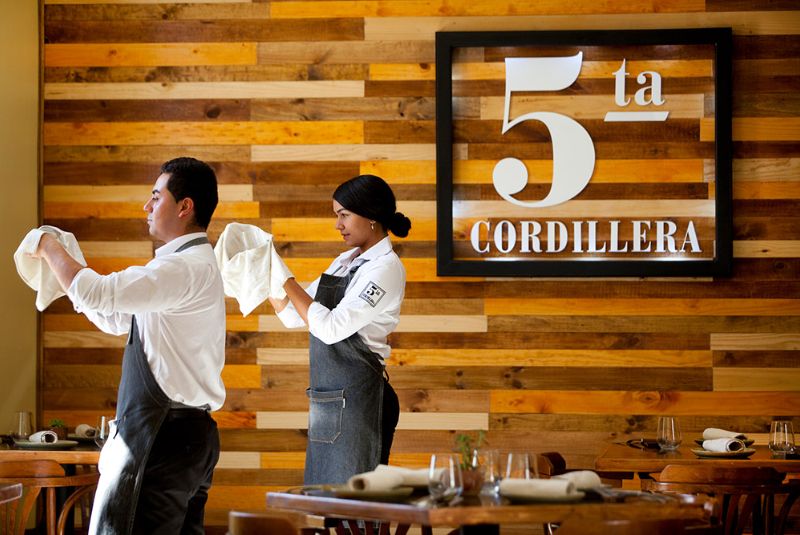
With a philosophy of working with ‘partners’ rather than simply ‘suppliers,’ 5ta Cordillera has always had a social purpose beyond being a restaurant. Working directly with the local gastronomic community to get the best of Chile’s Valle Aconcagua, Catalan chef Xavier Gil de Castro and his Chilean wife Gabriela Ordóñez serve local produce with a touch of global influence, like dried tomato tartare with seasoned jerky. The team has been integral to the work of Comida Para Todos, providing 150 meals a day for vulnerable people during the pandemic.
5tacordillera.com
Lenga, Puerto Natales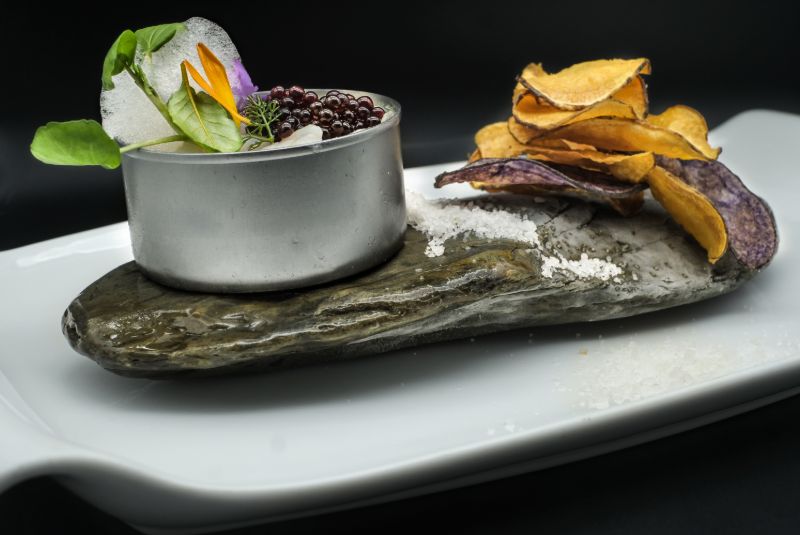
Located not far from the southern tip of Chile at the gateway to the magnificent Torres del Paine National Park, Lenga operates a seasonal menu based on local meats, cheeses, fruit and vegetables. Having met seven years ago when cooking at a mountain refuge together, Santiago-born cooks Rodrigo San Martín and Paula Ortiz alternate the roles running the kitchen and the dining room. During the pandemic, they have supported elderly people who have been isolated by the lockdown.
facebook.com/lengarestaurant
El Rancho de Doña María, Santiago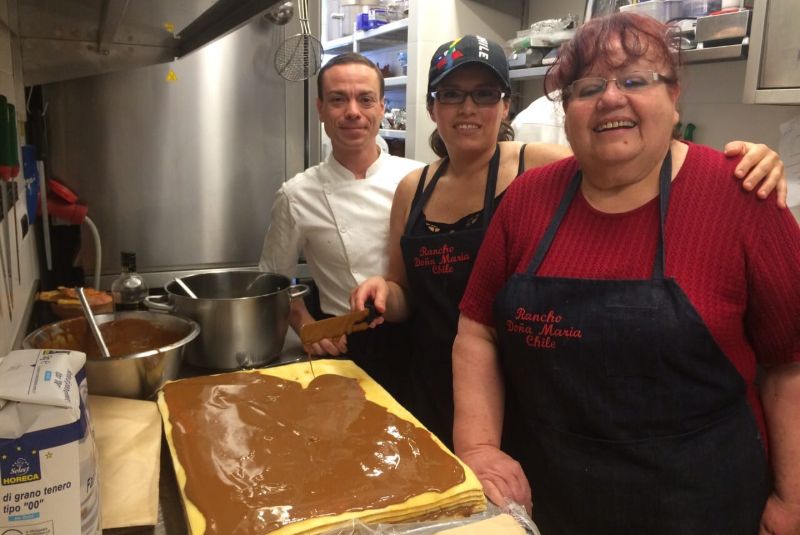
Located off a highway some 45 minutes north of Santiago, El Rancho de Doña Maria is a tiny, unpretentious restaurant that embodies the spirit of traditional, casual Chilean cuisine. Customers sit down at red plastic tables to enjoy Doña Maria’s excellent clay-oven-baked empanadas stuffed with beef, cheese or seafood, and main courses of roast chicken or pork ribs. Don’t miss the excellent leche asada dessert, a typical Chilean egg-custard flan.
No website or social media
La Calma, Santiago
A seafood restaurant in the Chilean capital that takes pride in working with artisanal fishermen, La Calma demonstrates the utmost respect for local produce. The creative menu offers everything from grilled tuna steak sandwiches to ceviche and chupe de jaiba, a comforting cheese-topped Chilean crab pie. Don’t miss the incredible pastries, including lemon pie and almond brioche tart.
lacalma.cl
La Caperucita y El Lobo, Valparaíso
Meaning ‘Little Red Riding Hood and the Wolf’ in Spanish, this restaurant in the port city of Valparaíso was once home to owner Carolina Gatica’s grandmother. Gatica and her husband Leonardo de la Iglesia transformed the first floor into a cosy restaurant in 2012, serving simple food like crab cakes and linguine using local ingredients. The couple joined the efforts of Comida Para Todos in April, serving some 1,200 meals per week to the most vulnerable in their community.
lacaperucitayellobo.cl
COLOMBIA
Elvia Cocina Local, Barichara
In a beautiful and remote rural village in Santander, north-central Colombia, Natalia Velásquez Ortega and Rafael Andrés Buitrago Martínez have developed a signature cuisine based on local culinary traditions and recipes. In their bright dining room, they present imaginative dishes such as pavlova with tangy guanabana fruit or doughnuts with the famous big-bottomed Santander ants. Elvia works with small rural producers, ensuring fair trade and paying respect to the community.
facebook.com/E-L-V-I-A-Cocina-Local
Chichería Demente, Bogotá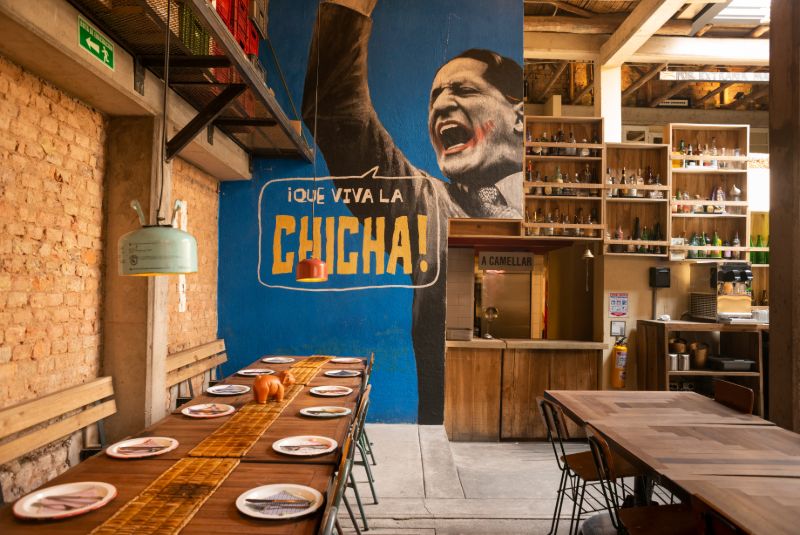
Founded in 2018 to employ underprivileged people while resurrecting local produce and culinary traditions, Chichería Demente is based around a wood-fired oven in one of the Colombian capital’s less-developed neighbourhoods. Here, diners can try the fermented ancestral drink chicha, as well as the root vegetable arracacha and various meats. For six months during the pandemic, Chichería Demente’s staff teamed up with El Chato restaurant to cook daily nutritious lunches for residents of a local refuge. They also sent their customers ‘hugs’ in the form of hot chocolate with marshmallows.
chicheriademente.com
Plaza de la Perseverancia, Bogotá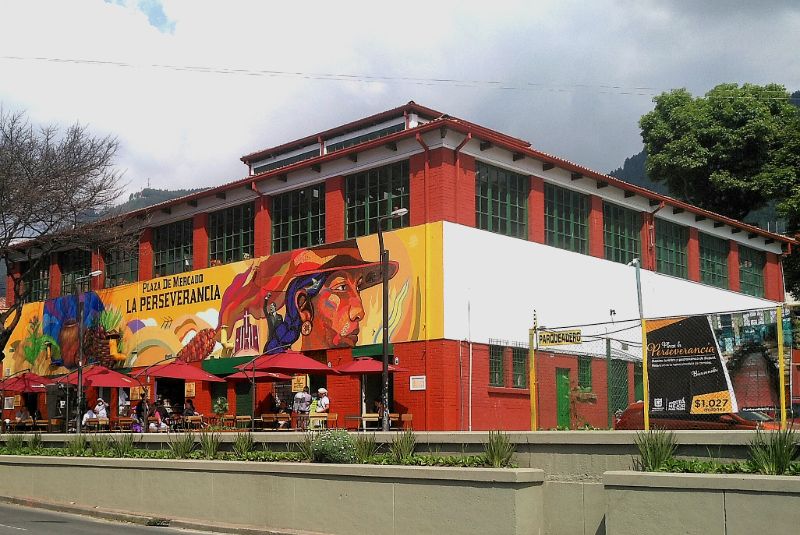
A food court with a difference, this indoor market in downtown Bogotá is run entirely by women from troubled and underprivileged backgrounds. Meaning ‘Perseverance Square’ in English, its wild success among locals and tourists alike is testament to the hard work of the women behind each stall, including Doña Luz Dary Cogollo, who showcased her award-winning version of the traditional ajiaco chicken soup at her restaurant Tolú in Netflix’s Street Food Latin America series. During the pandemic, the women of Perseverancia took part in a cookathon to provide meals to young children.
facebook.com/PlazadeMercadoLaPerseverancia
Sambombi, Medellín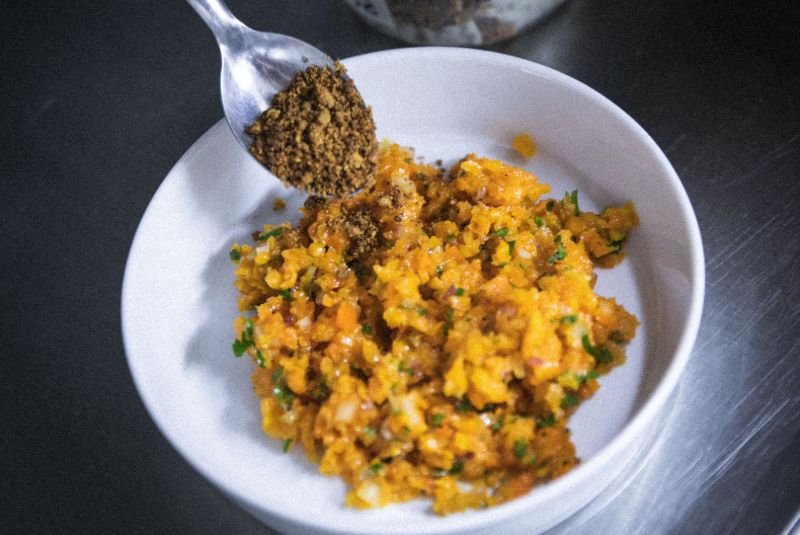
With a menu entirely inspired by ingredients from small local producers, Sambombi – named after a local word meaning ‘popular cuisine’ – serves elegant dishes like goat’s milk dulce de leche tart with cacao crust, roasted criolla potatoes or fettuccine with goat ragú. During the pandemic, chef Jhon Zárate and his team set up a delivery service to support their suppliers and collaborators.
facebook.com/sambombi.bistro
Mestizo Cocina de Origen, Mesitas del Colegio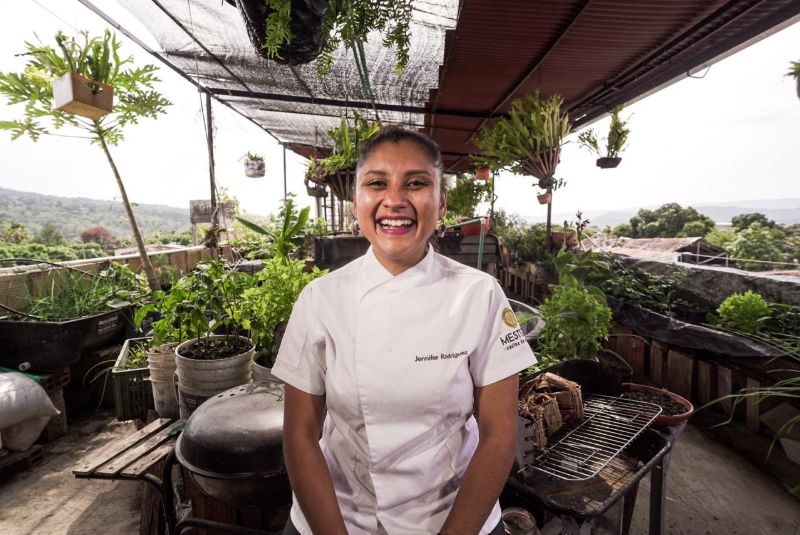
A family restaurant running for more than a decade with chef Jennifer Rodríguez at the helm, Mestizo is at the centre of its remote community. Focused on rural culinary traditions, the restaurant has its own allotment built by Rodríguez’s father, Alfonso. A jewel of Mestizo is Pancoger, a bakery using Colombian ingredients and fermentation techniques in sweet and savoury breads. During the pandemic, the restaurant began a ‘Share bread with your neighbour’ initiative to help the most vulnerable.
facebook.com/Mestizomesitasdelcolegio
La Vereda Cocina de Origen, Pasto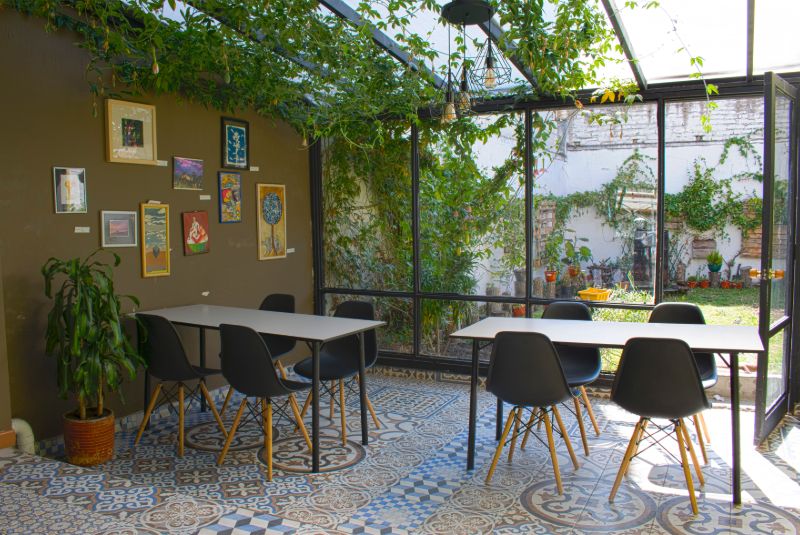
Located in the town of Pasto in southwest Colombia, La Vereda has at its heart a mission to heighten and revalue the cuisine of the Nariño countryside through extensive research and the interpretation of traditional recipes and local ingredients. Chef Jhon Edison Herrera works with indigenous and afro-Colombian communities as well as peasant associations, ensuring fair trade and responsible sourcing. A former teacher, Herrera also supports post-conflict initiatives, employing and training young people in rural communities affected by violence in Colombia.
facebook.com/laveredacocinaorigen
COSTA RICA
Al Mercat, San José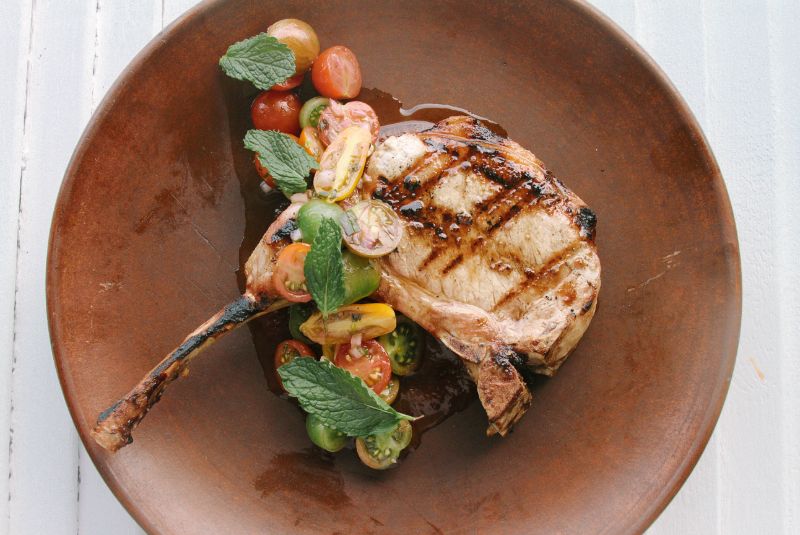
With the utmost respect for local producers and Costa Rican ingredients, Al Mercat pays homage to its community with myriad initiatives. Under the leadership of chef José González, the restaurant offers stages for young people from the community and workshops on Costa Rican cuisine for local mothers and young people. It is also involved in a project to clean up the River Tiribí. Through dishes like apple ceviche with tarragon, Al Mercat seeks to educate diners on the importance of consuming local produce.
almercat.com
Sikwa, San José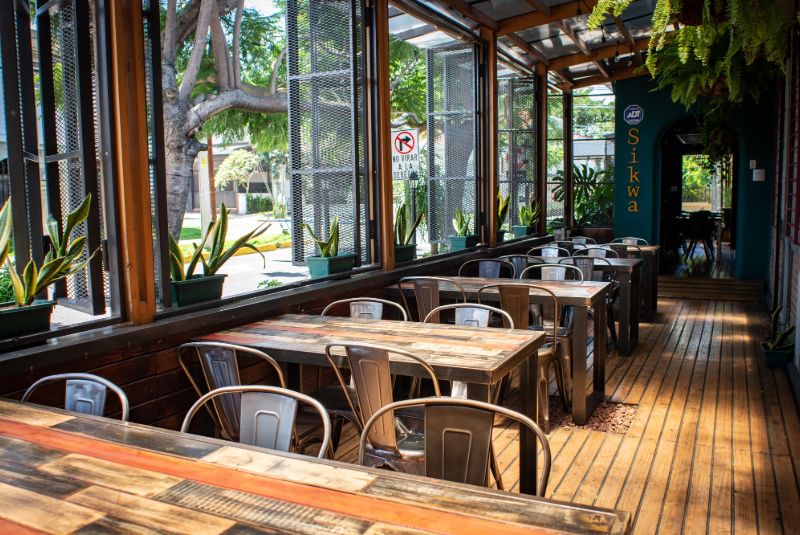
Not just a restaurant but also a centre for education and information on gastronomy, Sikwa was originally born in 2014 as part of a project to document Costa Rica’s culinary traditions, and transformed into a restaurant in 2018. It is the culmination of the work of chef Pablo Bonilla, who has travelled extensively and helped producers to sell their ingredients to other restaurants too. During the pandemic, access to indigenous areas has been restricted, but Sikwa has continued its work with the communities by carrying out research and deploying products to help protect them against Covid-19.
sikwacostarica.com
ECUADOR
Dos Sucres, Cuenca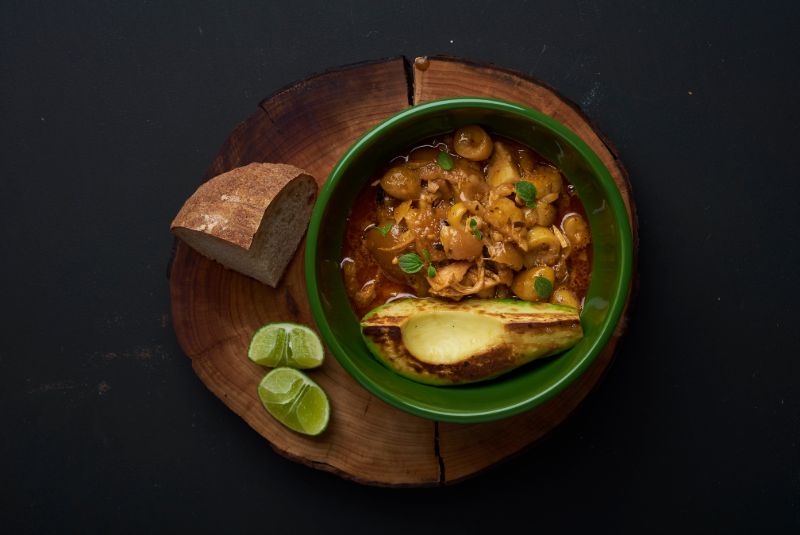
Led by chef Daniel Contreras, Dos Sucres serves simple, comforting Ecuadorean plates like mellocos con cuero, a dish of local tubers with pork. Working closely with the farmers’ association of Yanuncay, near Cuenca, Dos Sucres set up a marketplace in 2016, which evolved during the pandemic to produce family food baskets. The restaurant also helps promote and develop new products such as microgreens and plants so that they will eventually reach restaurants and homes. The name Dos Sucres comes from the old unit of Ecuadorean currency.
facebook.com/dossucres
Muyu, Galapagos
An educational project giving opportunities to underprivileged young people and women in the Galapagos Islands, Muyu encompasses a restaurant, farm and sea-to-table project benefiting more than 200 local families. Meaning ‘seed’ in the Kichwa language, Muyu has sustainability at its core, with a zero-waste approach and a commitment to teaching its cooks how to better care for the environment. The restaurant is located in a stunning setting at Playa de Oro and serves creative, colourful dishes such as roasted beetroot with foraged herbs and flowers. Hit especially hard by the pandemic as the islands rely solely on tourism, Muyu set up a crowdfunding campaign to allow it to buy food for the community and local farmers in need of support.
muyugalapagos.com
Anker by Urko, Quito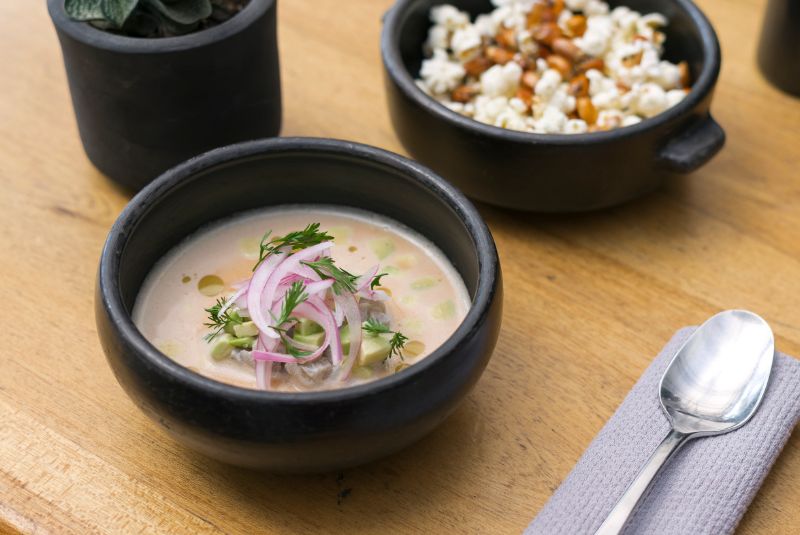
From the people behind Urko in the Ecuadorean capital, Anker began in the Galapagos Islands in 2017 and moved to Quito during the pandemic. Focused on the pillars of community, sustainability and local producers, Anker is working towards a zero-waste target and has numerous environmental initiatives. Chef Daniel Maldonado and team serve a simple, casual menu of dishes like fish-of-the-day ceviche, quinoa salad or octopus with potatoes. In March, the restaurant created a system to distribute food to 50 local families per week.
www.anker.rest
El Salnés Gastro-Picantería, Quito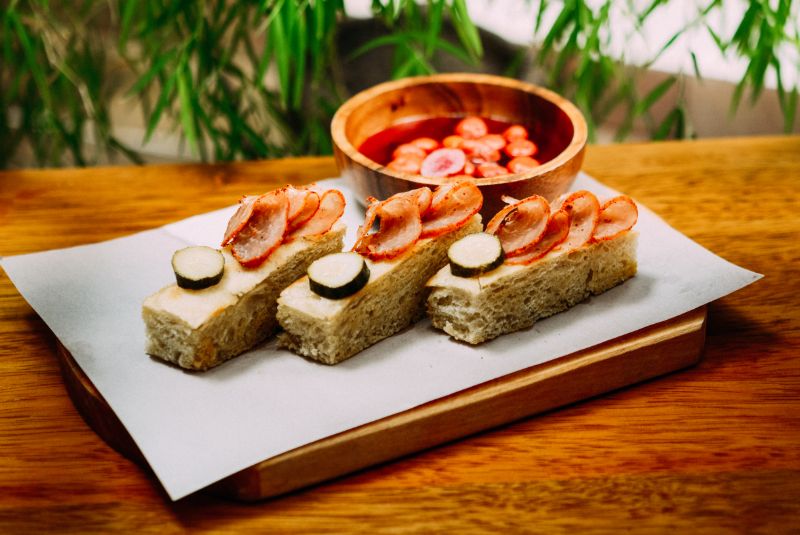
A traditional picantería converted into an elegant dining space, El Salnés serves a tasting menu of seasonal dishes such as purple carrot salad or grilled anchovies on toast. Chef Mauricio Acuña values Ecuadorean ingredients and organic produce and works tirelessly to promote local culinary traditions. The restaurant has several community initiatives, including educational grants for young farmers and charity collaborations to feed the hungry. El Salnés also runs a gastronomic conference called Latitud Cero.
facebook.com/ElSalnesEC
EL SALVADOR
El Xolo Taquería, San Salvador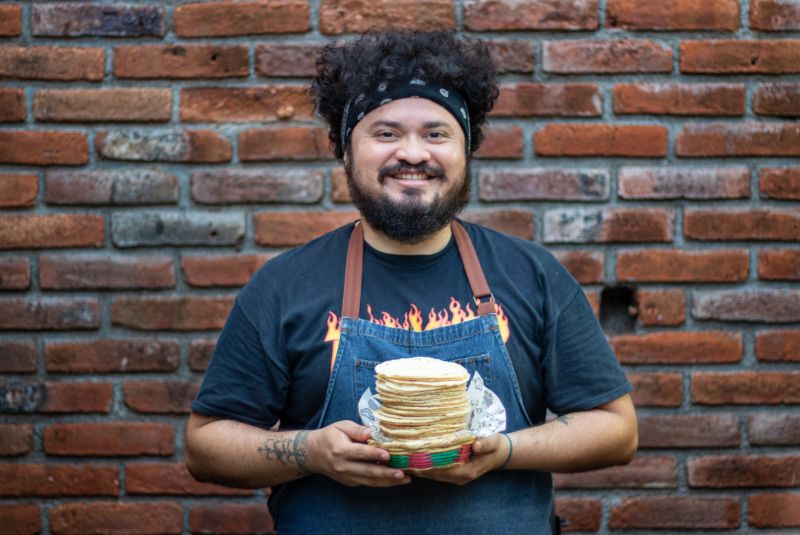
When the pandemic interrupted their plans to open Raíz, a Salvadorean restaurant, chef Alex Herrera and pastry chef Gracia Navarro instead opened El Xolo, a Mexican-inspired taco business using local products and corn from indigenous communities. In 2017, the young couple set up Centro América Unida, an initiative to bring together Central American chefs and help strengthen each other’s work. They also run Raíz Panadería, a bakery conceived during the pandemic to support producers and provide a livelihood to the team while under strict lockdown measures.
facebook.com/elxolotaqueria
Hacienda Real, San Salvador
A steak restaurant in the Salvadorean capital, Hacienda Real focuses on Spanish colonial and 18th century creole cuisine, cooking with adobe and wood ovens. On the menu is everything from mixed grills to juicy steaks, grilled fish and chorizo. With its lively atmosphere and music nights, Hacienda Real has become a favourite local haunt for family meals and special occasions.
haciendareal.com.sv
GUATEMALA
Diacá, Guatemala City
Coming from the Spanish ‘de acá,’ meaning ‘from here,’ Diacá is an exploration of Guatemala’s natural bounty, telling stories through dishes such as nuggets of ichintal, a root vegetable, and mahi-mahi fish ceviche. An intimate spot with just one table, Diacá serves a seven-course tasting menu developed by chef Deborah Fadul, celebrating the different regions and microclimates of Guatemala and their ingredients, cuisines and producers.
yocomoguate.com
Flor de Lis, Guatemala City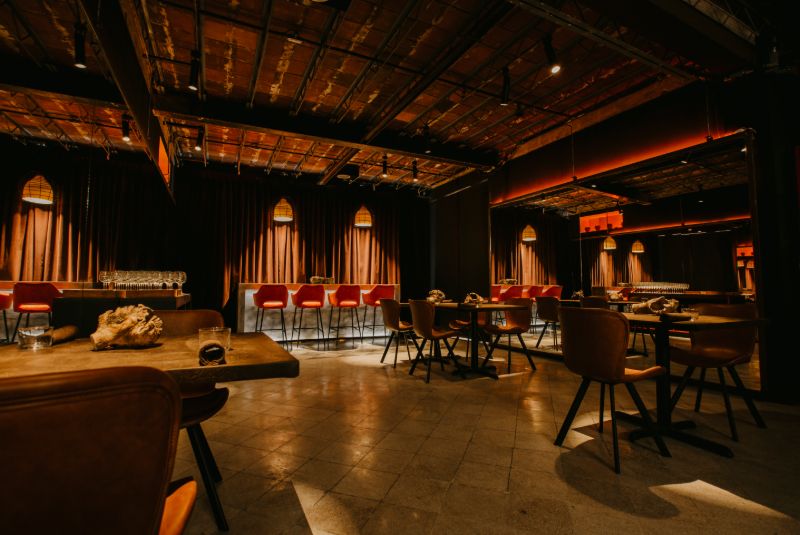
With a menu based around Mayan culture and Popul Vuh, the definitive book on Guatemala’s history, Flor de Lis uses local ingredients from small producers in its elegant menu. Chef Diego Telles educates diners on Mayan cuisines with courses like fermented potato parcels with a native mushroom that is said to be intoxicating. Telles is involved in various community initiatives, including Food for the Hungry and Esperanza Juvenil, an organisation that supports children from early learning through to university.
flordelisrestaurante.com
HONDURAS
Hacienda San Lucas, Copán Ruinas
Located near the Copán ruins, the archaeological site of the ruined Mayan city, Hacienda San Lucas is an eco-resort and hotel nestled in the mountains. Its restaurant offers a Mayan culinary experience, exploring ancient culture and cuisine through traditional ingredients like corn, squash and beans in a wood-fired oven. Don’t miss the beautiful hearty breakfasts – and, of course, the incredible views.
haciendasanlucas.com
El Patio, Tegucigalpa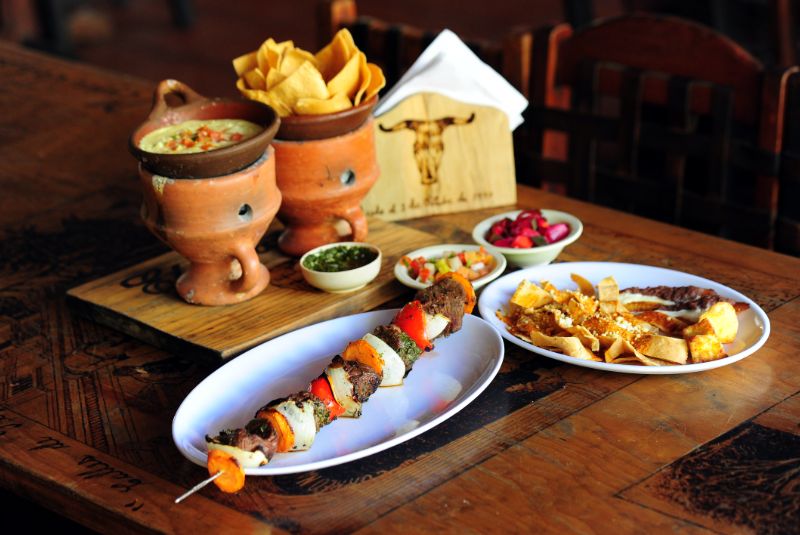
A 43-year-old restaurant serving traditional Honduran cuisine, El Patio is a favourite local spot that is central to the community of the capital. This unpretentious and eclectic place provides hearty fare such as meaty skewers and steaks, served in clay pots and charcoal-grilled in the ancestral style. The lively, colourful dining room is decorated with old photographs and totem-like statues representing indigenous figures.
facebook.com/elpatiohn
MEXICO
El Jarocho, Mexico City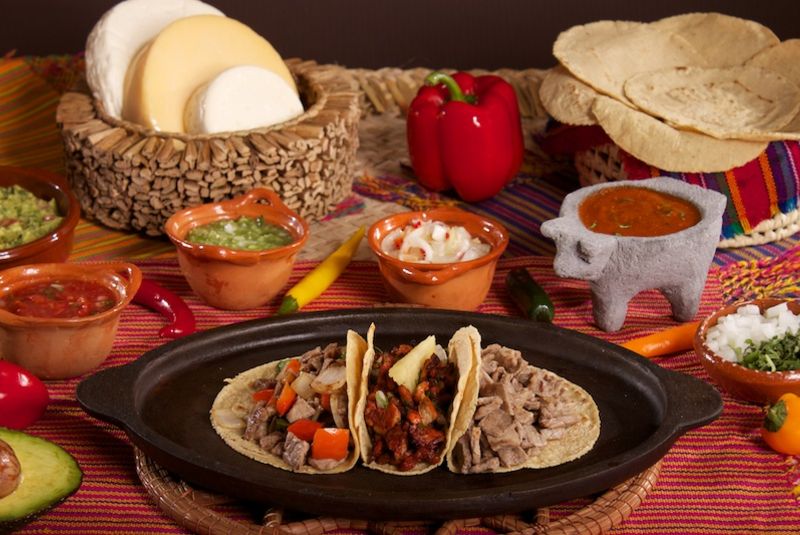
Widely regarded as one of Mexico’s best classic taquerías, El Jarocho has been open since 1947, when it was founded by Don Manuel Aquino, nicknamed El Jarocho because he came from Veracruz. When he died in 1962, he was succeeded by his wife, Doña Conchita, and the taqueria continued to thrive. It specialises in guisados, a type of stew-filled taco, and offers 20 different types including green mole with pork and red mole with chicken. On the same street corner in Colonia Roma for over 70 years, El Jarocho sits at the heart of its community and sources its ingredients from local producers – the tortilla dough is made in a corn mill just a few blocks away.
taqueriaeljarocho.com.mx
Los Panchos, Mexico City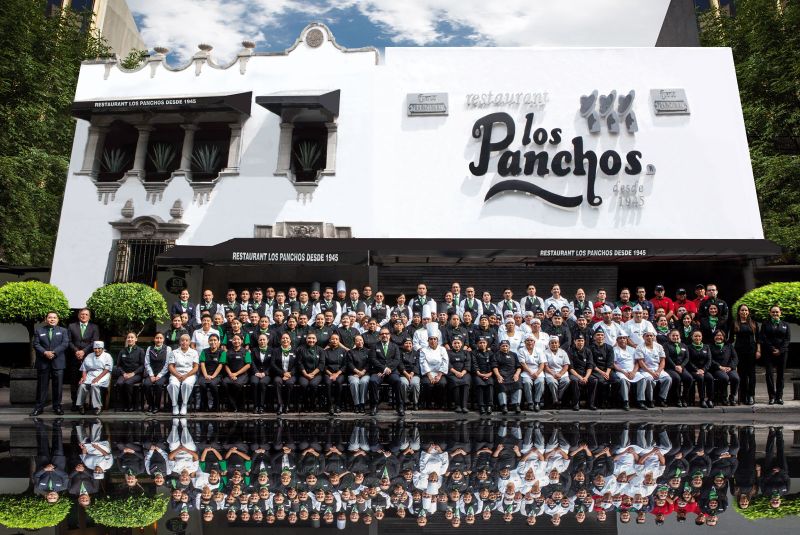
A shrine to the Mexican dish carnitas, Los Panchos uses top quality meat and cooks directly on the flames to create meals that have kept the public returning for 75 years. Los Panchos began in 1945 in Colonia Anzures with Francisco Chischistz Correa and his wife Carolina, who worked in the kitchen until she died. Now, chef Mariana Guadarrama and her team are heavily involved in community work and throughout the pandemic they have been important members of Comidas Solidarias, a not-for-profit donating meals to the vulnerable with strong support from Quintonil chef Jorge Vallejo. The spirit of generosity at Los Panchos comes from Doña Carolina, the founder, who began the tradition of donating the first sale of each day to charity.
instagram.com/lospanchosrest
Meroma, Mexico City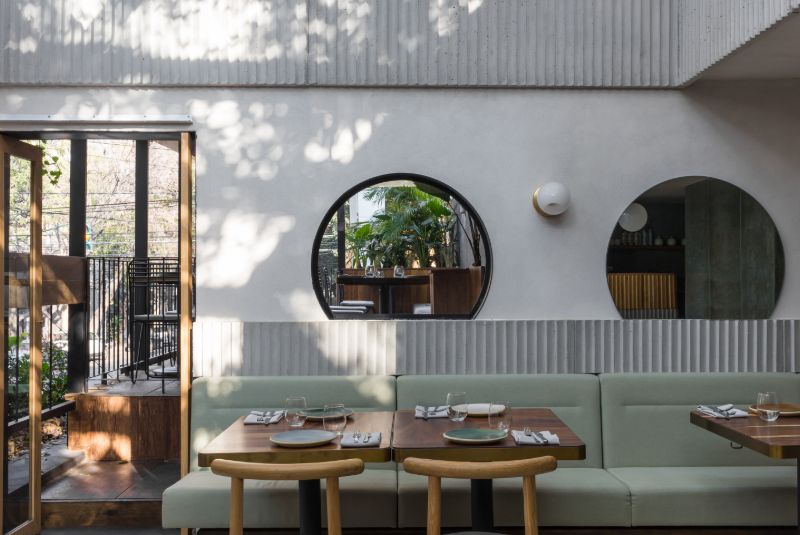
With a commitment to responsible sourcing and sustainable produce, Meroma uses every part of the animal in its dishes, including 20-year-old retired dairy cows from nearby Puebla. The restaurant was born in 2016 with chefs Mercedes Bernal and Rodney Cusic at the helm, and its contemporary cuisine is focused on natural produce from Mexico’s land and sea – think chocolate clam escabeche or heirloom tomato salad. During the pandemic, Bernal and Cusic helped cook 300 meals for emergency services as part of the Comidas Solidarias initiative.
meroma.mx
Milk Pizzeria, Monterrey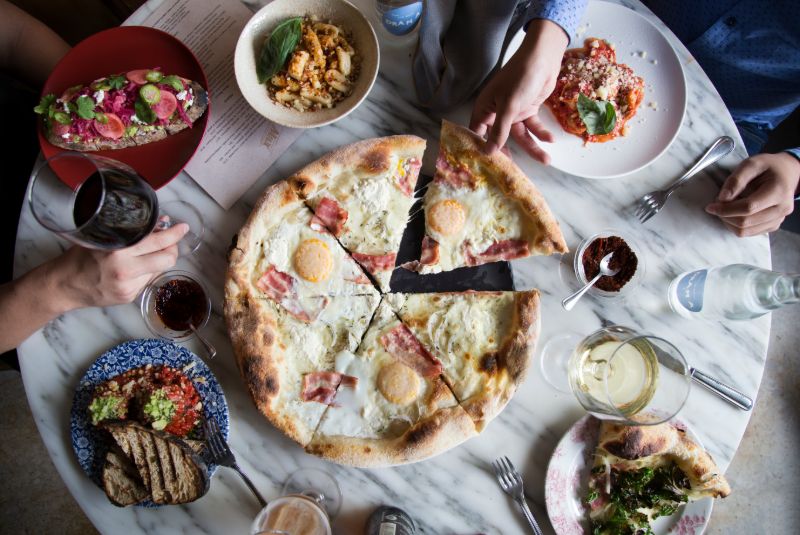
A beloved institution located in the northern Mexican city of Monterrey, Milk Pizzeria serves the finest red and white pizzas at accessible prices, from a simple margarita to a masterpiece of onion, gruyere cheese and black truffle. Its name comes from the Californian gay activist Harvey Milk, whose work inspired the pizzeria’s relaxed style and philosophies of freedom and equality. Throughout the pandemic, Milk has converted its long-running ‘industry nights’ into delivery events, selling accessibly priced meals from guest chefs including Pangea’s Guillermo González Beristain.
facebook.com/MilkPizzeria
Casa Oaxaca, Oaxaca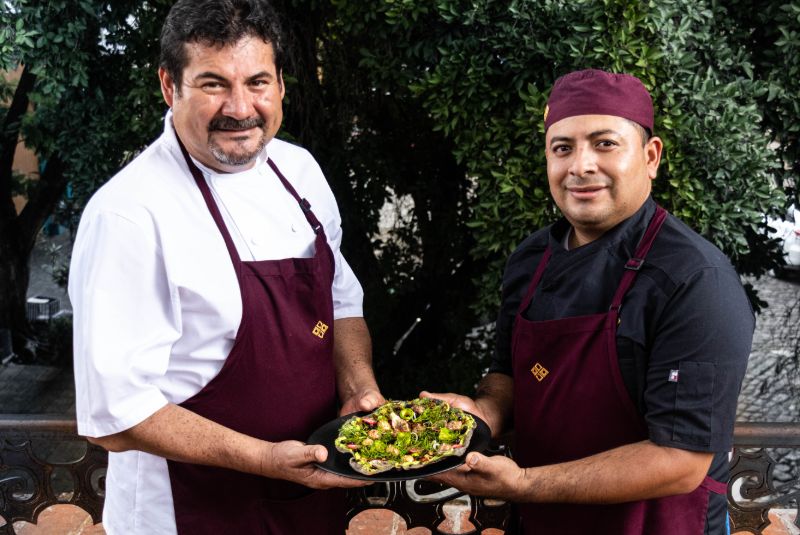
Recognised as one of Mexico’s most important chefs, Oaxaca native Alejandro Ruiz has been championing the culinary heritage and ingredients of his state for more than 20 years. Having opened within the Casa Oaxaca hotel in 1997, the restaurant expanded in 2003 and has showcased Oaxaca’s unique recipes and sauces in dishes like black mole with turkey ever since. During the pandemic, Ruiz and his team have been cooking and raising money for those affected by Covid-19 as well as for local craftsmen affected by a fire.
casaoaxacaelrestaurante.com
El Mural de Los Poblanos, Puebla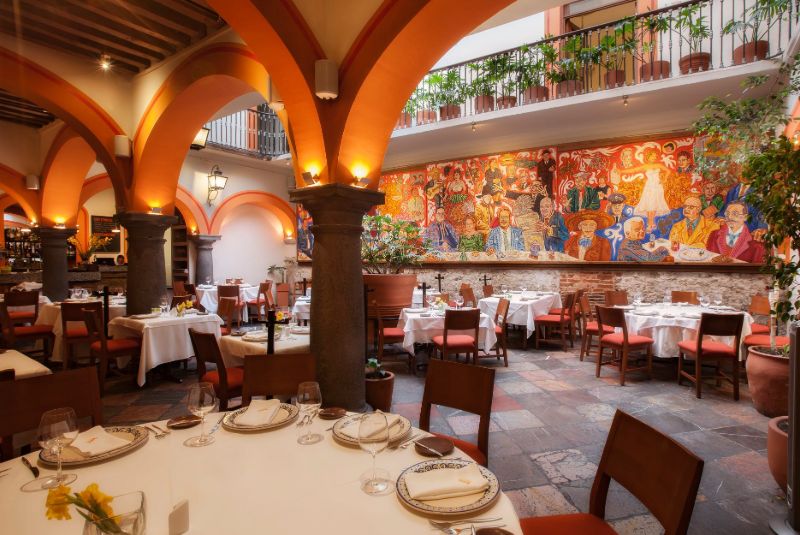 Founded in 1994 by Juan Cué Morán and now run by his son, Luis Javier Cué, El Mural de Los Poblanos in the historic central-Mexican city of Puebla has earned its reputation as a traditional restaurant beloved by its many regulars. A true local spot with warm lighting, brightly coloured art and a beautiful courtyard dining room, Los Poblanos offers traditional Puebla cuisine, with traditional recipes including chiles en nogada, a dish in the colours of the Mexican flag to celebrate the country’s independence.
Founded in 1994 by Juan Cué Morán and now run by his son, Luis Javier Cué, El Mural de Los Poblanos in the historic central-Mexican city of Puebla has earned its reputation as a traditional restaurant beloved by its many regulars. A true local spot with warm lighting, brightly coloured art and a beautiful courtyard dining room, Los Poblanos offers traditional Puebla cuisine, with traditional recipes including chiles en nogada, a dish in the colours of the Mexican flag to celebrate the country’s independence.
elmuraldelospoblanos.com
NICARAGUA
Asados Doña Tania, Managua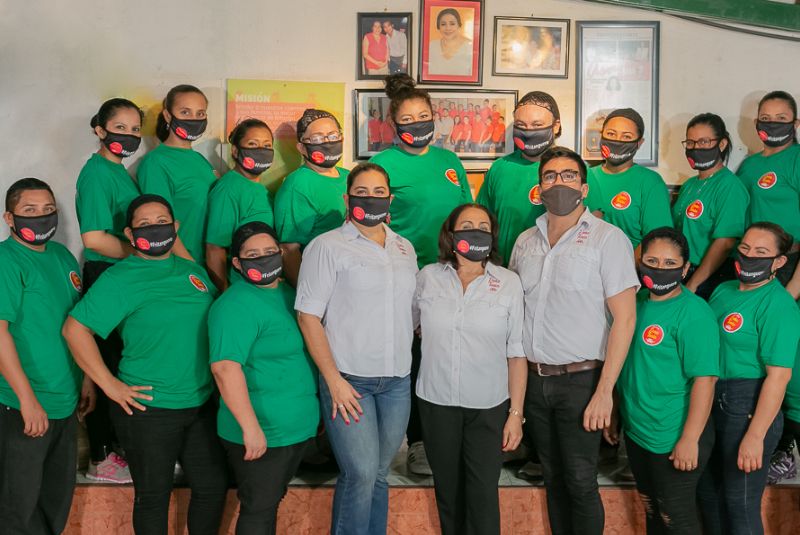
Family-run Asados Doña Tania has been attracting customers for its famous fritangas, or Nicaraguan barbecues, to its laidback premises in Managua for 23 years. When it began in 1997 owner Tania Meza Rojas was recently divorced with two children to care for and had no idea how to manage a business; she now runs the hugely successful operation with her daughter, Tania Balladares Meza, serving typical local meats with accompaniments like crunchy green banana strips and fried tacos.
facebook.com/AsadosDonaTania
Harvest, Managua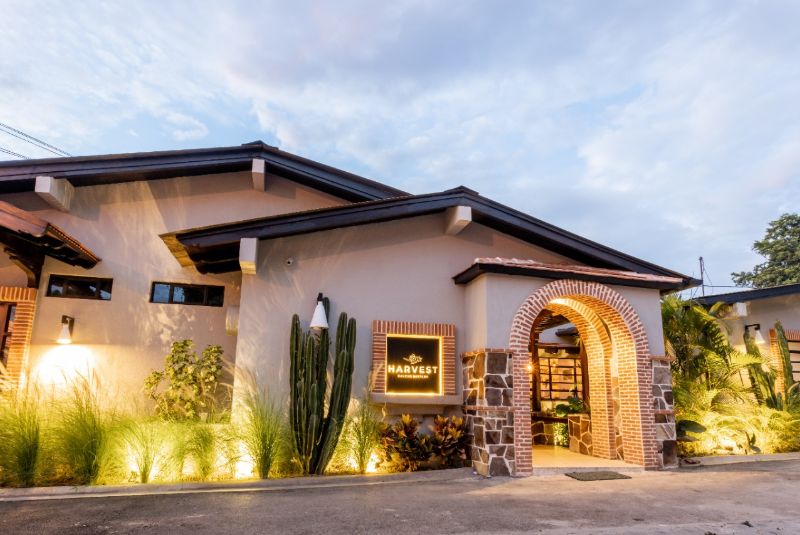
A farm-to-table concept and sustainable restaurant, Harvest opened in 2019 to bring to the of Rancho Santana, the owners’ resort on the southwest coast, to the Nicaraguan capital. Using ingredients from the farm at Rancho Santana, executive chef Jerson Rivas cooks super-fresh dishes like octopus aguachile with corn tostadas, or raspa de camarones, a crunchy, paella-like dish with prawns. Harvest has an onsite shop selling hams, cheeses, honey and vegetables produced on the farm. The restaurant takes its social responsibility seriously, working closely to support local communities.
facebook.com/Harvest-Managua
PANAMA
Receta Michilá, Bocas del Toro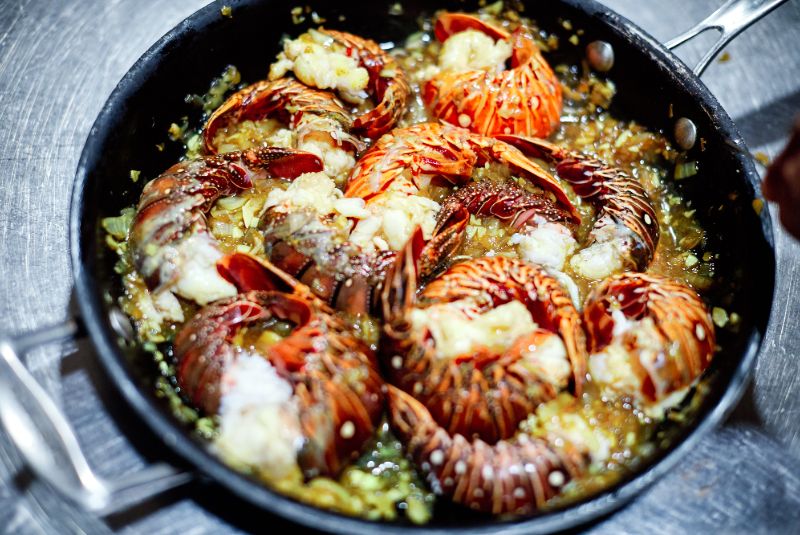
Located on the tiny Carenero Island in Bocas del Toro province, Receta Michilá began life in a restaurant that originally belonged to chef Joseph Archbold’s mother, Doña Xiomara, who taught him to cook. After studying in France and the US, Archbold returned to Panama to cook and promote afro-Caribbean cuisine, resurrecting lost recipes and ingredients with stunning dishes like red clams with coconut milk and green banana sauce. During the lockdown, he spent time studying local plants and working on the restaurant’s herb garden, as well as opening a shop selling products and collaborations with local producers. Michilá is the name of an undervalued indigenous dish of ripe plantain porridge with coconut milk.
facebook.com/recetamichila
Fonda Lo Que Hay, Panama City
Meaning ‘whatever is available’ in Spanish, Fonda Lo Que Hay was created when chef José Olmedo Carles Rojas was experimenting on his day off from his first restaurant, Donde José, and would throw together dishes from whatever he could find. The restaurant serves popular contemporary cuisine like concolón, a crispy rice dish with pork and beans, while working with local producers and constantly promoting Panamanian produce. During the pandemic, the team cooked for the vulnerable in collaboration with a foundation called Héroes en Blanco (Heroes in White).
facebook.com/Fonda-Lo-Que-Hay
PARAGUAY
Bastardo, Cocina Sin Raíces, Asunción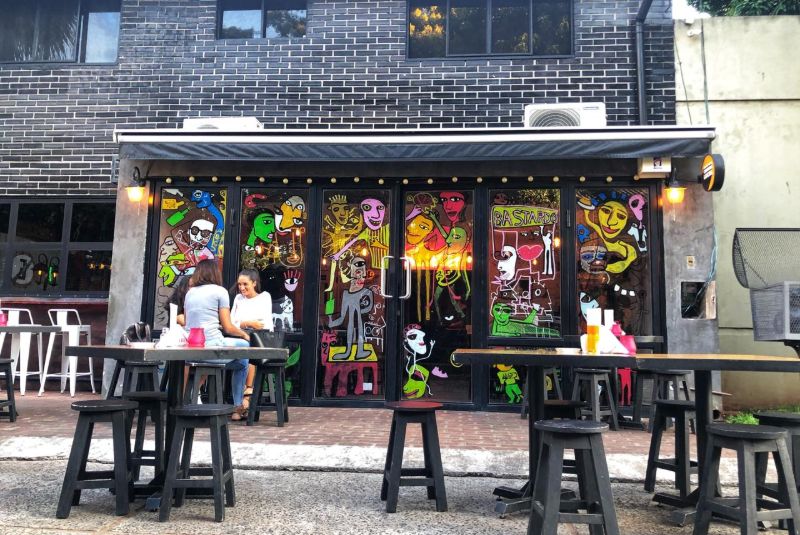
A popular restaurant set up by three friends, Bastardo is named for its desire to not conform to specific rules, styles or labels. Influenced by co-owners Adriana Falcón and Pablo Mazzara’s time in New York and Madrid respectively, Bastardo’s menu is completely eclectic, with pizzas like the ‘false Neapolitan’ alongside bursting pork bao buns, sticky cauliflower bites, ceviche and even beef burritos. During the pandemic, chef Miguel Robles and team adapted their menu for delivery.
facebook.com/bastardopy
El Bolsi, Asunción
A 60-year-old local favourite restaurant in the centre of the Paraguayan capital, El Bolsi is open 24 hours a day and serves everything from sushi bowls to risottos, sandwiches and sticky homemade doughnuts. During the pandemic, the team went a step further in serving their community by delivering much-needed food and drink supplies to the emergency services.
facebook.com/elbolsi
El Café de Acá, Asunción
An 11-year-old café serving homely Paraguayan dishes like mandi’o chyryry, a comforting plateful of cassava, egg and cheese, El Café de Acá is owned by self-described ‘amateur cook’ and foodie Patricia Ciotti. The restaurant is heavily involved in supporting the community, having set up a vital campaign to feed and raise money for voluntary firefighters combating wildfires in the arid Chaco region. El Café de Acá is also a patron for school charity El Cántaro BioEscuela, which offers free art, design and music classes to children in the city of Areguá.
facebook.com/ElCafedeAca
Pakuri, Asunción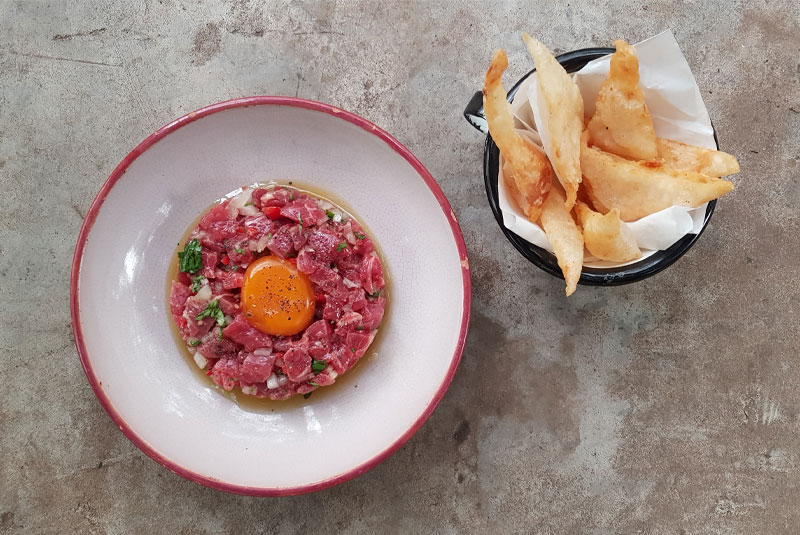
Run by chef Sofía Pfannl and her sommelier husband Miguel Burga, Pakuri – named after an indigenous Paraguayan fruit – uses native ingredients in creative dishes such as arroz kesú, a hearty bowl of spoonable rice with a poached egg and a nutritious plant called kumandá yvyra’í. The restaurant is made from recycled shipping containers, highlighting Pfannl and Burga’s approach to sustainability and respect for the local environment and culinary traditions.
La Nueva Palomino, Arequipa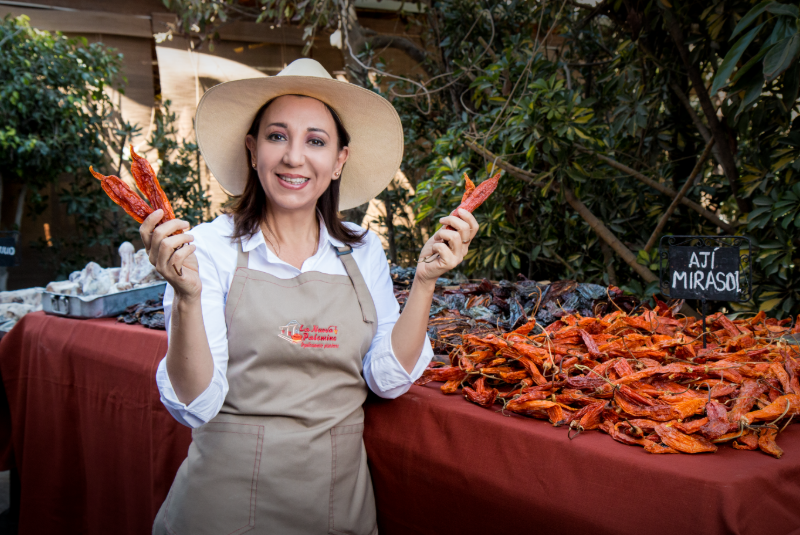
A traditional Peruvian picantería in the southern city of Arequipa, La Nueva Palomino has been led by the women of the same family for three generations, with chef Mónica Huerta at the helm for the last 16 years. Based around the tradition of chicha, a pre-Hispanic native drink made from black corn, the restaurant serves flavour-packed dishes like adobo arequipeño, a pork stew, and rocotó relleno, stuffed red peppers with meat, tomatoes and cream. A vital part of its community, in October the restaurant teamed up with Social Gastronomy Movement to provide meals to those most in need.
facebook.com/LaNuevaPalomino
Al Toke Pez, Lima
A tiny hole-in-the-wall restaurant with one counter set around an open kitchen, Al Toke Pez serves fresh ceviches and seafood rice dishes prepared by young chef Tomás Matsufuji. Set up in 2011, the restaurant’s goal was to promote seafood that is often undervalued in Peruvian society and to support sustainability. It quickly became a hit and even appeared in Netflix’s Street Food Latin America documentary in 2020. During the pandemic, Al Toke Pez has supported neighbouring restaurants with initiatives to help them stay afloat.
instagram.com/altokepezlonche
Chifa Titi, Lima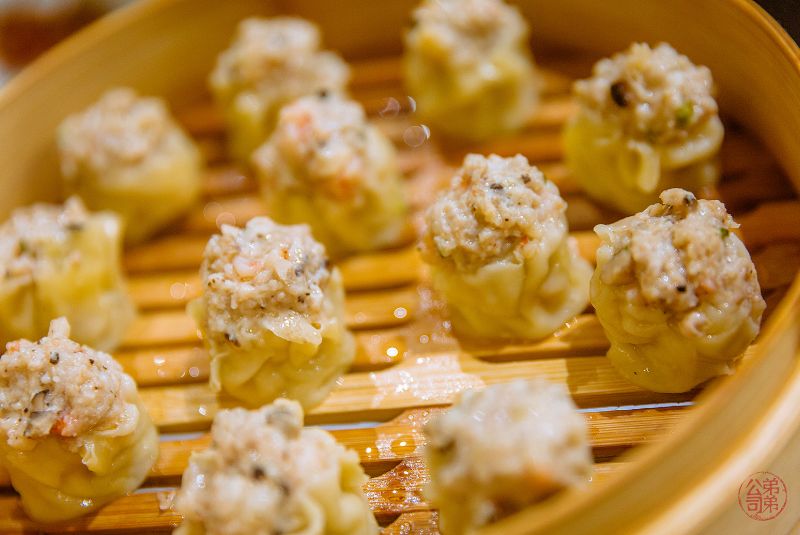
A historic restaurant open for 64 years, Chifa Titi serves classic Chifa, or Cantonese cuisine, with dishes such as chaufa pork fried rice, stuffed mushrooms and fried wontons. A family enterprise, it was founded by poor immigrants Willian Chan and his wife Juana Lucia, using crockery donated by family and friends. Though their first sale was a meagre cup of coffee, they quickly established an audience with their secret tool: Chan’s ancestral recipe for chicken kut gion kay. Throughout the pandemic, Chifa Titi has provided financial support to its suppliers and partners, retaining all staff and providing appropriate safety measures.
chifatiti.com
Huerta-Chinén, Lima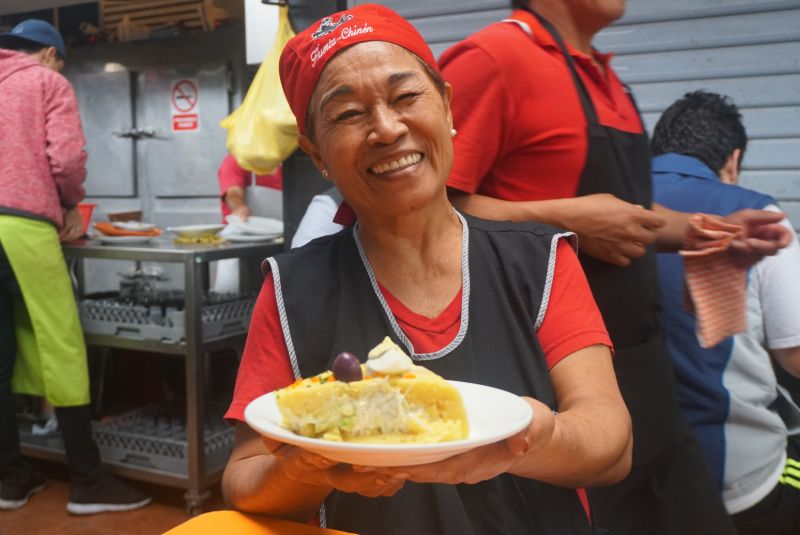
A tiny, popular restaurant located within Lima’s Mercado de Surquillo, Huerta-Chinén has been running for 36 years with chef Angélica Chinén Garay at the helm. The daughter of Japanese immigrants who moved to Peru during wartime, Chinén learned to cook for her younger siblings at an early age to help her parents. At Huerta-Chinén, she serves traditional Peruvian dishes like mashed potato causa filled with chicken and mayonnaise, and beef tongue stew. The chef has many LGBTQ staff and has fought to defend them from abuse and intolerance.
instagram.com/huertachinen
Chuncho, Ollantaytambo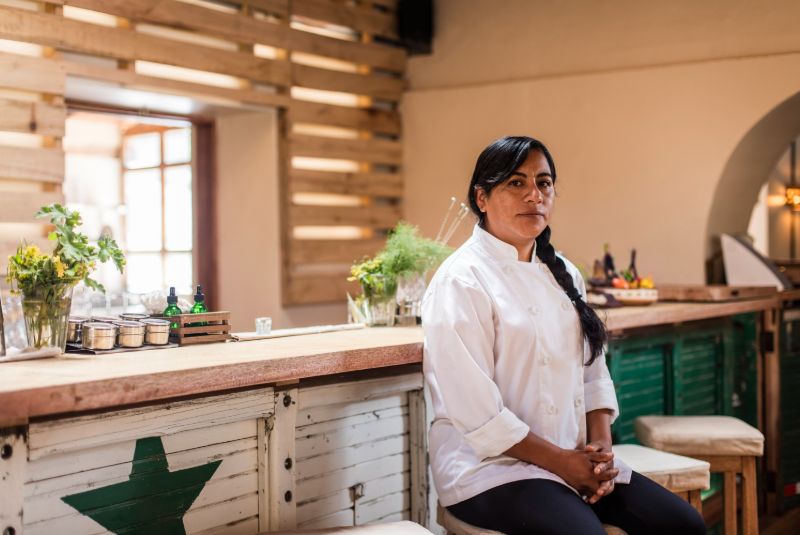
Located in the valley of Urubamba near Cusco, Chuncho – which means ‘native’ or ‘wild’ in the quechua language – serves traditional cuisine based on ingredients and recipes from the surrounding region. There is no white flour, refined sugar, rice, beef or processed products on the menu – chef Josefina Rimachi cooks using native herbs, corn flour and proteins like alpaca and guinea pig for less environmental impact. Though the restaurant opened in 2018, the family-run group has been going for 40 years and includes a distillery, coffee business and hotel. Chuncho is part of Valle Sagrado Verde, an initiative set up during the pandemic to support local producers and help with reforestation in the area.
elalbergue.com/restaurant/chuncho
La Patarashca, Tarapoto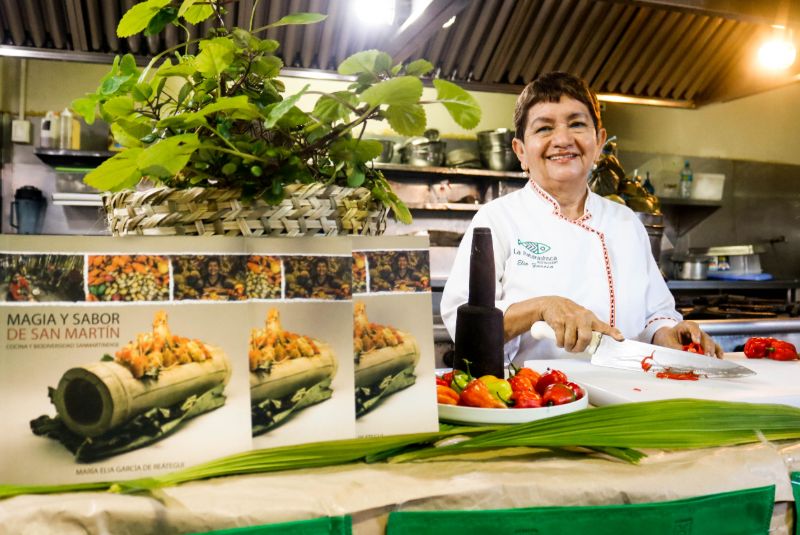
An important reference in Peruvian Amazonian cuisine, La Patarashca has been championing the ingredients and recipes of the rainforest for almost 30 years. Using tubers, tropical fruit and river fish, chef Elia García cooks traditional dishes such as juane, a nutritious parcel of chicken, boiled eggs, rice and spices. García works with the indigenous communities of San Martín, researching and documenting their culinary heritage. To support local producers and artisans during the pandemic, La Patarashca opened an organic market.
lapatarashca.com/restaurant
URUGUAY
Bar Tinkal, Montevideo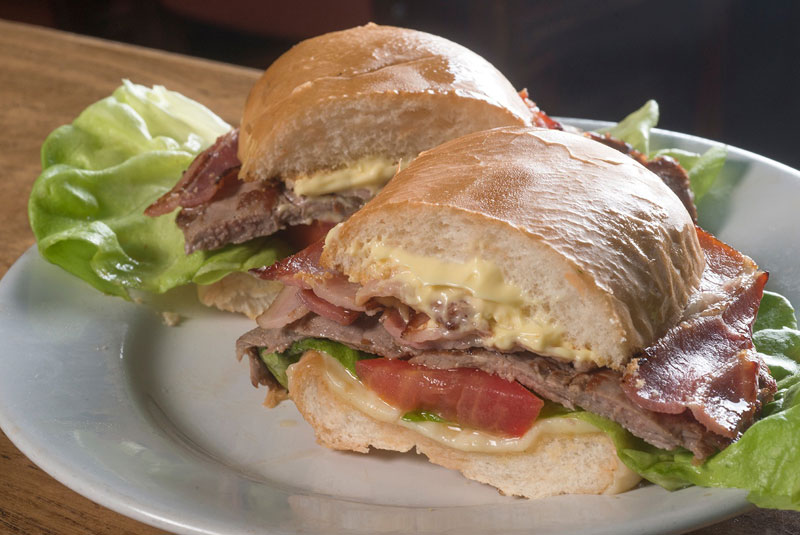
Reaching its 50th birthday in 2020, this much-loved steak sandwich bar has been celebrating its rich history during this difficult year. Opened in the 1970s by Spanish immigrants Manuel Bello and Lucila González, Bar Tinkal is known for its legendary version of Uruguay’s national dish, chivito, a bursting bap of tender steak, lettuce, bacon and tomato. A must-visit stop in Montevideo, the restaurant is now run by the founders’ grandchildren, Diego and Cecilia Pérez Bello, who introduced regular live music nights on Fridays and Saturdays.
facebook.com/bartinkal
Café Misterio, Montevideo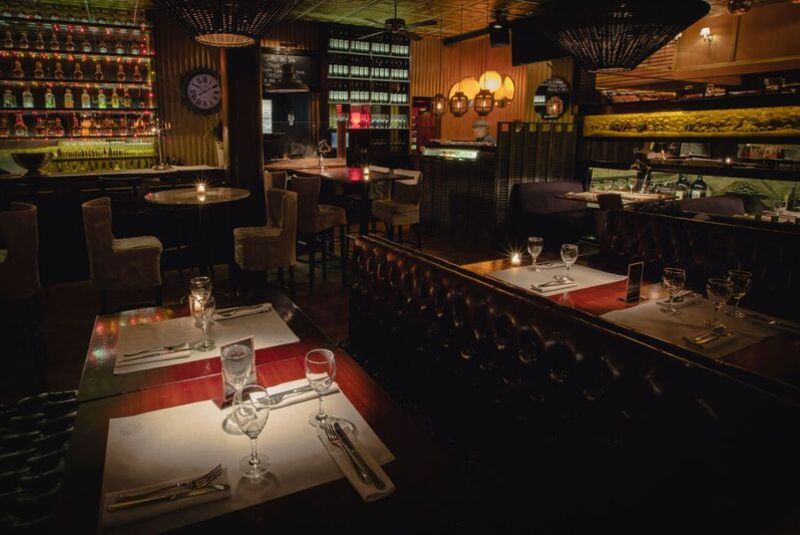
A much-loved local restaurant, Café Misterio has been serving the community in the Uruguayan capital since 1993. It has an eclectic and extensive menu with sushi and sashimi, nutritious mains and salads and comfort foods such as lamb empanadas and grilled squid, all served in a cosy dining room by chef Juan Pablo Clerici. During the pandemic, Café Misterio kept all its staff and donated food to a soup kitchen in the local neighbourhood, as well as giving work to the team’s families as part of the restaurant’s new delivery service.
cafemisterio.com.uy
Jacinto, Montevideo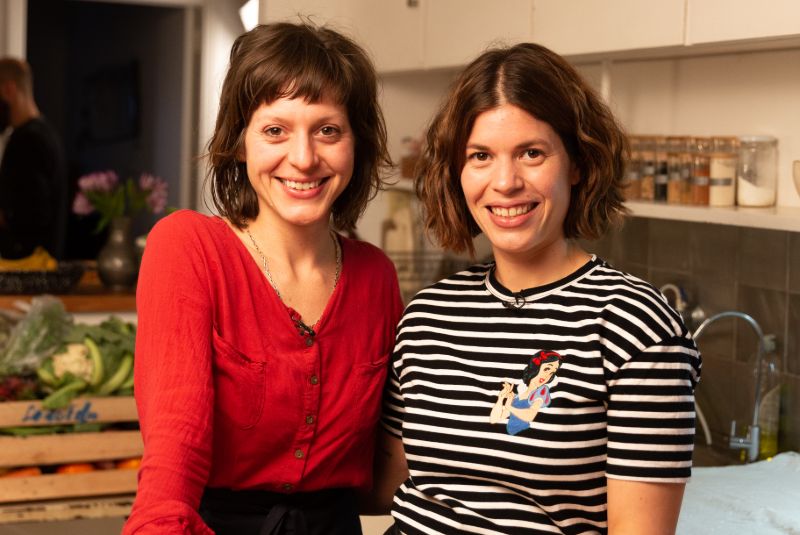
Owned by sisters Lucia and Pilar Soria, Jacinto opened in 2012 and has become a neighbourhood favourite in its Montevideo neighbourhood. With Italian and Spanish influences, Chef Pilar prepares simple, seasonal dishes including fresh pappardelle, fettucine and ravioli, as well as local delicacies like crunchy sweetbreads. Lucia commands a well-thought-out list of Uruguayan wines in a spacious and minimalist dining room with exposed brick walls. The sisters also run their own bakery.
jacinto.com.uy
Lo de Tere, Punta del Este
This enduringly popular restaurant in the upscale Uruguayan beach resort of Punta del Este, Lo de Tere is focused on the finest sustainable Atlantic seafood and local produce. On the tasting menus of five to seven courses are dishes such as mussels with herbs, delicate squid ink ravioli with crab or wild langoustine ‘bonbons’ with mushroom consommé. Chef Maria Marfetano is part of a movement to protect the ocean and ensure sustainable fishery.
lodetere.com
VENEZUELA
Barriga Llena Corazón Contento, Caracas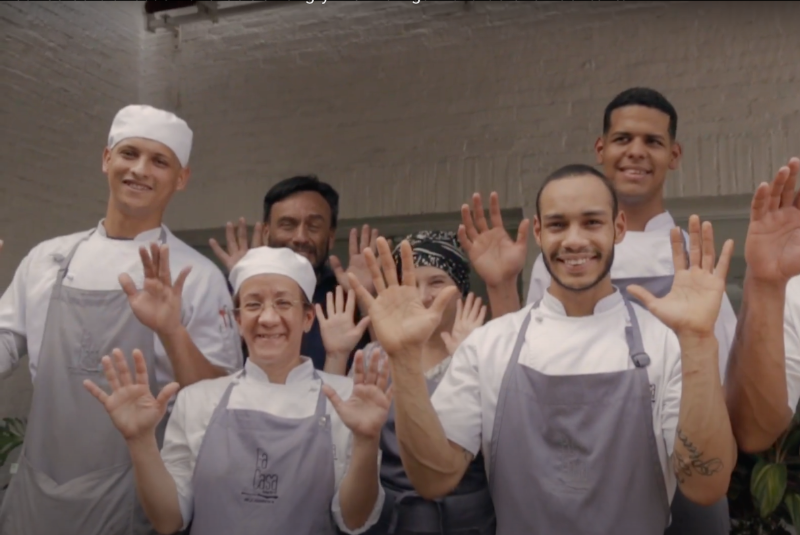
Created in 2016, this foundation (translating as ‘Full Bellies, Happy Hearts’) began as an initiative to provide nutritious soups to the children, doctors and nurses at a hospital in Caracas. Led by chef Francisco Abenante and a group of cooks and communicators including Alto’s Carlos García, it evolved to feed elderly people in care homes and school children, even leading to a rise in school attendance. Now, despite restaurants closing due to the pandemic, Barriga Llena has continued its work to feed the most vulnerable.
instagram.com/barrigallenacorazoncontento_ve
El Comedor, Caracas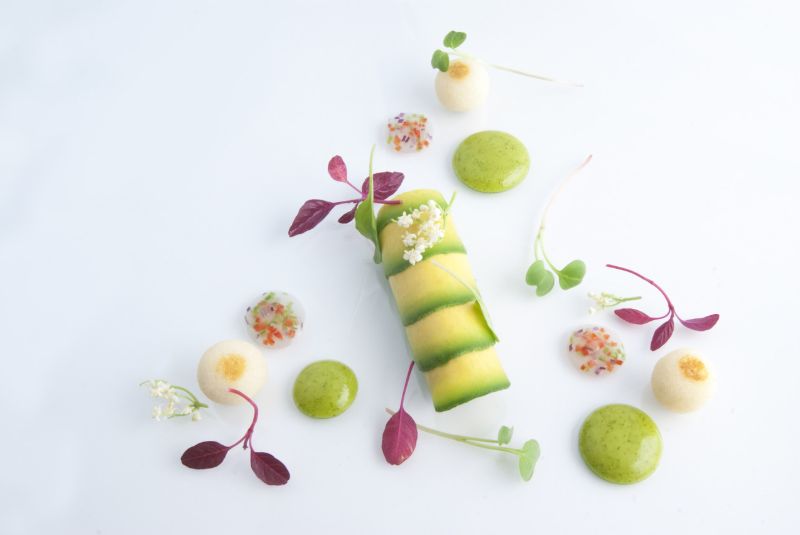
A fine dining restaurant with a difference, El Comedor is run by chefs trained at the Instituto Culinario de Caracas, a cookery school set up by chef Hector Romero in 2003. A key figure in Venezuela’s gastronomic community, Romero has mentored hundreds of chefs and conducted valuable research and investigation for decades. Open since 2008, El Comedor serves contemporary Venezuelan cuisine like local abalone cocktail or miniature cod roe tamales, and is the showcase for the research and learnings of the institute. During the pandemic, the chef launched Romero Atelier as a marketplace selling local ingredients to support the team.
romerohector.com/site/proyectos/el-comedor
Moreno, Caracas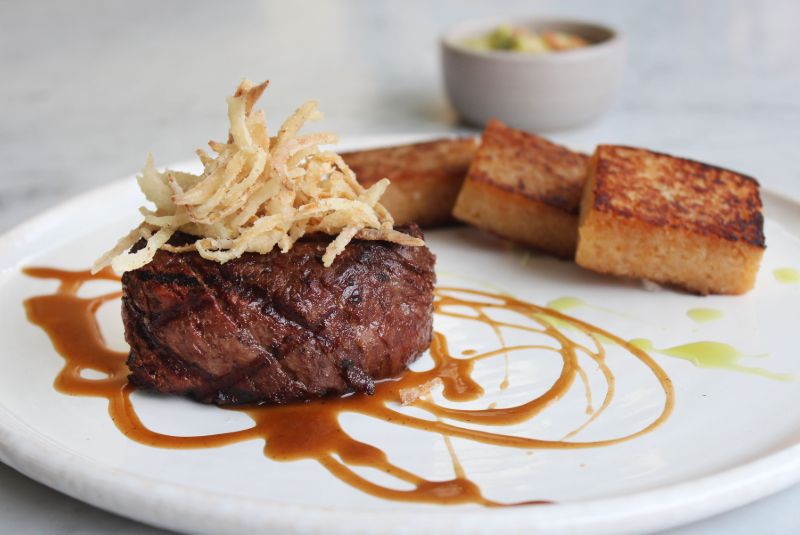
Championing contemporary Venezuelan cooking from a time when only French and Italian cuisines were valued, chef Victor Moreno is a great promoter of his country’s culinary traditions and local talent, which he refers to as ‘Venezuela kitchen power’. Seeking to provoke emotions through his dishes, Moreno serves everything from simple chicken rice to Caribbean fish soup. Since long before the pandemic, the restaurant has provided 150 meals per week to a local primary school and during the crisis also delivered 30 weekly meals to a local hospital.
morenocaracas.com
Travel across Latin America and discover the restaurants included in El Espíritu de América Latina:
The list of Latin America's 50 Best Restaurants 2020, sponsored by S.Pellegrino & Acqua Panna, will be revealed on Thursday, 3rd December via a virtual awards ceremony. Tune in on Latin America's 50 Best Restaurants Facebook from 21:00 GMT (15:00 MX; 16:00 CO/PE; 18:00 AR/BR/CL) to follow the action live; discover the digital events taking place ahead of the awards; and find us on Instagram, Twitter and YouTube to stay up to date with the latest news.

